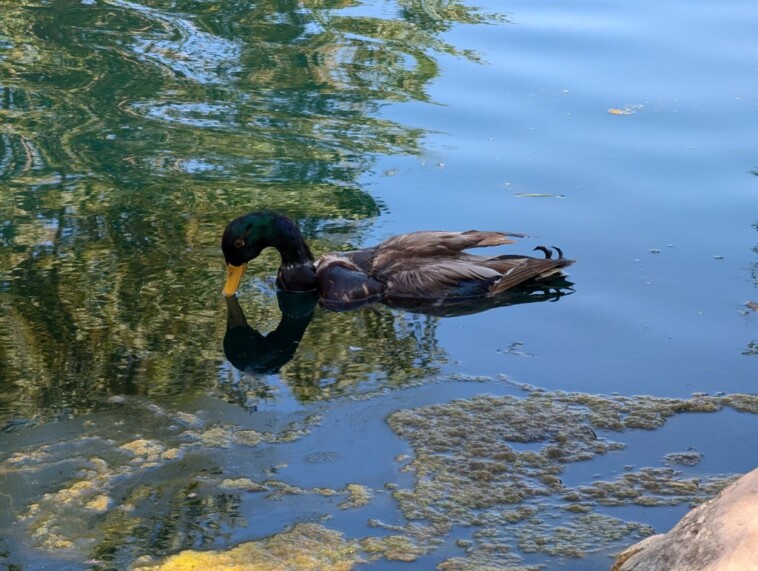Researchers have developed zombie duck drones made from the bodies of dead birds.
A team at New Mexico Tech has found a way to use body parts to create realistic avian imposters.
They believe the drones would aid wildlife monitoring by blending in a natural environment.
After showcasing the idea last year, mechanics have now been incorporated into ducks that can swim on water and pigeons fitted with cameras in their necks.
Assistant professor of mechanical engineering Dr. Mostafa Hassanalian says the team does not kill birds for the devices and they haven’t been developed for espionage.
The team explains: “The latest developments in the project focus on two taxidermy-preserved mallard ducks, engineered as both flapping and swimming drones.
“The swimming version replicates the duck’s leg movements, enabling realistic, natural motion in water.
“This innovative project blends avian physiology with advanced drone mechanics to create drones that closely mimic the natural flight patterns and behaviors of real birds.”
Beyond the mallard duck drones, the team is advancing the project by integrating shape memory alloys into the claws of a taxidermy pigeon, aiming to enable it to perch and observe a scene.
Dr. Mostafa Hassanalian explains: “I should mention that the main and only use for this project is wildlife monitoring, not spying. Drones are being used for wildlife monitoring; however, they create lots of noise which could scare the animals.
“No real birds were physically harmed in the making of the drones, and we do not intend to do this at all.
“We have only used the feathers and taxidermy birds that are available in the market and have worked with local taxidermy artists.”
The team adds: “The overarching goal of this project is to develop safe, eco-friendly platforms that can support wildlife monitoring, mitigate bird strikes near airports, and offer novel approaches for environmental observation and research.
“This fusion of taxidermy with drone technology marks a new era in bioinspired engineering, setting the stage for versatile, low-impact drones that harmonize with nature.”









